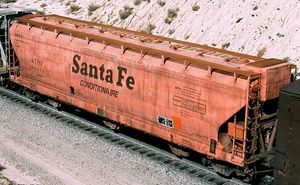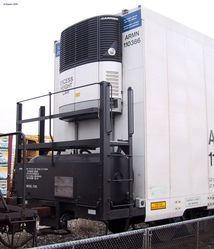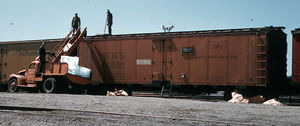Refrigerator car/Gallery
(PD) Engraving: Railroad Gazette
This engraving of Tiffany's original "Summer and Winter Car" appeared in the Railroad Gazette just before Joel Tiffany received his refrigerator car patent in July, 1877. Tiffany's design mounted the ice tank in a clerestory atop the car's roof, and relied on a train's motion to circulate cool air throughout the cargo space.(PD) Photo: Smithsonian Institution
A Pullman-built "shorty" reefer bears the Armour Packing Co. · Kansas City logo, circa 1885. The name of the "patentee" was displayed on the car's exterior, a practice intended to "... impress the shipper and intimidate the competition ...," even though most patents covered trivial or already-established design concepts.(PD) Photo: American Car and Foundry Company
A rare double-door refrigerator car utilized the "Hanrahan System of Automatic Refrigeration" as built by ACF, circa 1898. The car had a single, centrally located ice bunker which was said to offer better cold air distribution. The two segregated cold rooms were well suited for less-than-carload (LCL) shipments.(PD) Photo: American Car and Foundry Company
A pre-1911 "shorty" reefer bears an advertisement for Anheuser-Busch's Malt Nutrine tonic. The use of similar "billboard" advertising on freight cars was banned by the Interstate Commerce Commission in 1937, and thereafter cars so decorated could no longer be accepted for interchange between roads.(PD) Photo: Swift Brands
A view of the Swift Brands Sioux City, Iowa meat packing plant, circa 1917. All but one of the refrigerator cars in the photo bear the markings of the Swift Refrigerator Line.© Image: Orange Public Library
A crate label for Hewes' Transcontinental Brand of El Modena, California, circa 1930 depicts a trainload of Pacific Fruit Express (PFE) ventilated refrigerator cars passing near San Francisco Bay.(PD) Photo: William B. Barry
A Swift refrigerator car has reached the end-of-the-line at East Orange, New Jersey. The car has been repainted and was photographed in mid- or late-1937, after the use of "billboard" advertising on freight cars had been banned by the Interstate Commerce Commission, and such cars could no longer be accepted for interchange between roads.

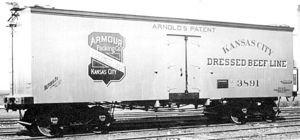

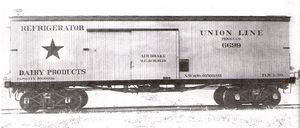

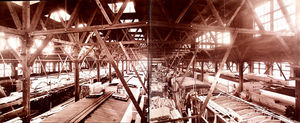
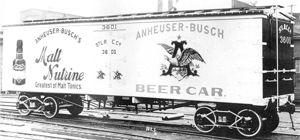
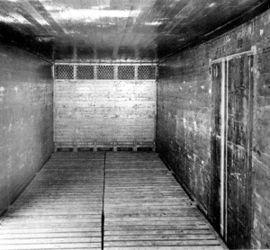
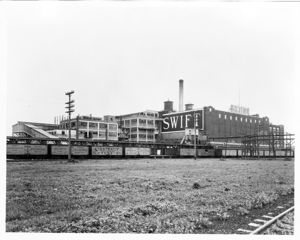
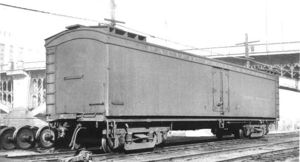


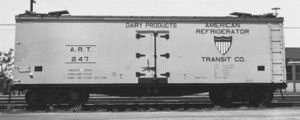
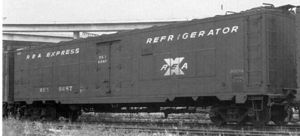
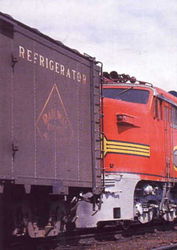
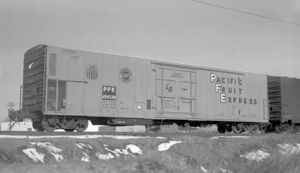
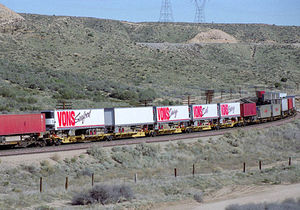
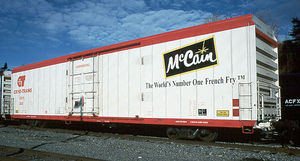
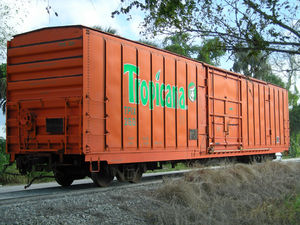

![(PD) Photo: Garitzko Outside of North America, railroad cars which have been outfitted with cooling equipment (and designated as Class "I" by the International Union of Railways [UIC]) are generally referred to as "refrigerated vans."](/wiki/images/thumb/9/92/Kuehlwagen_Interfrigo.jpg/300px-Kuehlwagen_Interfrigo.jpg)
